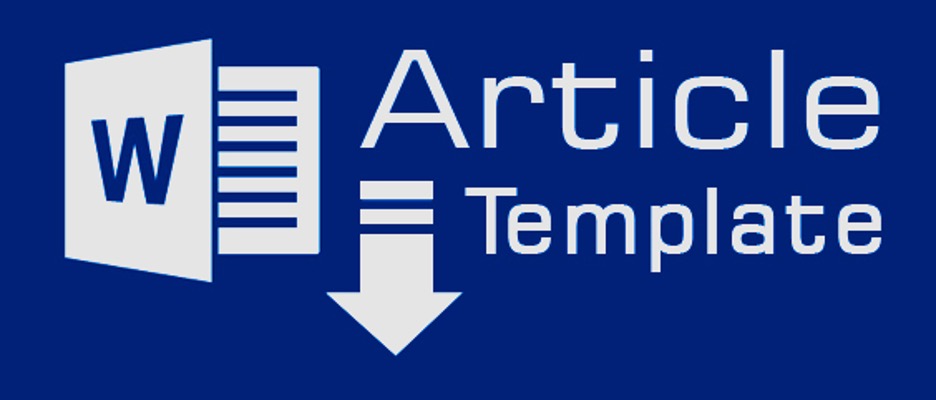Author Guidelines
International Journal of Local and Global Islamic Dynamics (abbr. IJOLANGID) is a high-quality open-access peer-reviewed research journal published by LP3M Institut Agama Islam Bakti Negara (IBN) Tegal, Central Java, Indonesia. The focus is to provide readers with a better understanding of classical or contemporary dynamics in Islamic society and thought by publishing articles and research reports.
International Journal of Local and Global Islamic Dynamics specializes in humanities topics, original research, and relevant current issues. This journal warmly welcomes contributions from scholars of related disciplines. International Journal of Local and Global Islamic Dynamics has been available online since December 2024.
It aims to facilitate scholarly and professional discussion over current humanities and social science developments concerning Islamic and Islamicate aspects of law, spirituality, etc. Publishing articles exclusively in English, the journal seeks humanities discourses to access broader English-speaking contributors and readers worldwide. Hence, it welcomes international Islamicists, scholars, professionals, executive authorities, researchers, and students' contributions.
How to Write the Title, the Name, and the Authors’ Address
The title of the manuscript should be on the top of the first page with the center text alignment. Meanwhile, the author’s name, affiliation, and address should be mentioned in the manuscript and not exceed 5 authors, while the email is only mentioned for the corresponding author. Communication regarding the article revision and the final statement will be informed via email to the corresponding author only as listed in the metadata. It is suggested that the authors collaborate with researchers from diverse countries/continents.
The Manuscript General Guidelines
The manuscript text has to meet the general guidelines as follows:
- The manuscript is the authentic research result that has not been published or has been being submitted in other publication media or publishing houses.
- The manuscript does not contain any plagiarism element. To check the possibility of plagiarism, please use the Turnitin application. It must be below 25% plagiarism, and authors must attach the Turnitin checking result and the manuscript. The editorial board will directly reject the text that indicates plagiarism.
- The manuscript article writing guidelines and 2024 template can be downloaded at the home page of the International Journal of Local and Global Islamic Dynamics website and are available in MS Word (*.doc/*.docx) format.
- The manuscript of the online submission procedure is available in the online submission guidelines in the following parts.
- The manuscript should contain several aspects of a scientific article, namely: (1) title of the article, (2) author names, email, and institution, (3) abstract, (4) keywords, (5) introduction, (6) result, (7) discussion, (8) conclusion, (9) acknowledgment (if any), (10) references. Otherwise, the manuscript will be rejected.
- The subtitles included in the discussion part (Introduction, Methods, Result and Discussion, and Conclusion) should be written in bold and title case format. It uses the left-text alignment without underlining. The following expanded subtitles should also be typed in bold and italic with the same format using the left text alignment.
- The manuscript can be in either English with the standard language. The paper must be elaborated between 6500 - 10.000 words, including abstract, references, and footnotes, and written in Ebrima font 12 with 1.15 line spacing. The article is on Letter-sized papers A4 (21 x 29,7 cm) with custom margins: left 20 mm, right 20 mm, bottom 20 mm and top 20 mm.
- The tables, figures, and other visualization instruments are placed in the text group. Each must be given a title and a caption below them and be numbered in Arabic, followed by the figure or table title above it. The attachment should be guaranteed well printable (font size, resolution, and line space are clearly seen) and be placed in the center between text groups. If it is bigger, it can be placed in the center of the page. The table should not contain vertical lines, while horizontal lines are allowed only for the vital points.
The Guidelines for the Manuscript Body Text
The title of the manuscript:
The title should be informative and be written both briefly and clearly. It cannot diverse multiple interpretations. It has to be pinpointed with the issues that will be discussed. The beginning word is written in the capital case and symmetrically. The article title does not contain any uncommon abbreviation. The main ideas should be written first and followed then by explanations. The article title should be written within sixteen words, in 20pt-sized font, with the bold selection, and in the center text format.
Abstract: This Abstract section should be typed in Ebrima with a font size of 11 pt while the number of words is around 200-250. For this section, please use the left and right margins of 10 mm. The single spacing should be used between lines in this article. The abstract should be typed concisely and contain a problem statement, method, scientific findings, results, and a short conclusion. The abstract should only be typed in one paragraph and one-column format. Keywords are min 4 words and max. 5 words using font Ebrima 10 pt. The abstract must be in English.
Introduction: The purpose of this section, as the word indicates, is to provide readers with an introduction to the study and, hence, to smoothly lead into a description of the methods employed in the current investigation. The introduction must, therefore, contain (shortly and consecutively) a general background of the problem the authors investigate. It should give readers enough information to understand and consider authors’ specific objectives within a larger theoretical framework or broader relevant discussion. While placing the current work in a broader context, authors should clearly state the position of the current research among previous relevant research(es) in the literature review (state of the art) as the basis of the brand new research questions. The scientific article format does not allow writing down the references as in the research report. They should be represented in the literature review to show the brand-new scientific article. Besides, all background information gathered from other sources must be appropriately cited so that the current research's novelty, originality, and state-of-the-art are known. In the final part of the introduction, the purpose of the article writing should be stated, as well as its basic argument or hypothesis.
Methods: The Methods section contains enough information to enable the readers to understand what practically was done. Avoid giving conceptual explanations about a particular method, approach, or research type too long. Instead, accentuate the explanation of how the data was obtained, coded, and analyzed. This is also the space in which the authors, if necessary, can explain reasons for choosing any specific theoretical framework for their current research.
Result and Discussion: Result and Discussion should be written in the same part and aligned with the research questions/objectives in the subheading numbers and writing flow. They should be presented continuously, from the main result to supporting results, and equipped with further discussion. The discussion section should cover basic principles ranging from analytic, implicative, interpretative, and constructive to comparative. Figures, Tables, and other visualizations (if any) should be put in the same part of this section and made available for editors to edit. If the authors provide any relevant picture, ensure it is high resolution. Although both the result and discussion are written in the same part, it has to be clear between what the data tells and how it relates to the broader relevant discussion or relevant current theoretical framework.
Conclusion: Instead of replicating any part from the Abstract or Result and Discussion section, this part states what the authors think the data implies and means and, as such, should relate directly back to the problem/question of the article regarding the broader discussion of the theme. Limitations of the current study and suggestions for further relevant research should also be mentioned here. This section should neither offer any reasons for those particular conclusions—as it should have been presented in the Discussion section. By only looking at the Introduction and Conclusions sections, a reader should have a good idea of what the researcher has investigated, discovered, and contributed, even though the specific details would not be known.
Acknowledgment: Authors might express appreciation and gratitude for physical and moral help during the writing process of the article since the data compilation to the publication. This is valid for both persons and institutions, such as respondents or funding providers.
Bibliography: References of the manuscript must be up to date. At a minimum, there used 30 references 40% of them are from primary sources/reputable academic journals accessible by everyone. Authors are responsible for ensuring that the information in each reference is complete and accurate. All references should be cited within the text; otherwise, these references will be automatically removed. A bibliography should use a reference manager application such as Mendeley or Zotero using the American Sociological Association (ASA) 6th Style.
Transliteration: IJOLANGID only uses International Journal of Middle East Studies (IJMES) transliteration system. For detailed information, you can download it here.
The Guidelines for Literature Reviews, Citations and References
Authors are suggested to cite several articles from the International Journal of Local and Global Islamic Dynamics. All the presented data or quotes should attach the reference sources. The references and literature review should use Mendeley or Zotero reference application manager. The writing format in the International Journal of Local and Global Islamic Dynamics follows the format applied by the American Sociological Association (ASA) 6th Style.
The Online Submission Manuscript Guidelines
The manuscript text submission must be through the following steps: Firstly, register a. Firstly, register as either an author or reviewer (check the role as author or reviewer) in the “Register” bottom.
- After completing the registration step, log in as an author, then click on the “New Submission” column. The article submission stage consists of five stages: (1). Start, (2). Upload Submission, (3). Enter Metadata, (4). Upload Supplementary Files (Optional), (5). Confirmation.
- In the “Start” column, choose the Journal Section (Full Article) and check all the checklists.
- In the “Upload Submission” column, upload the manuscript files in MS. Word format.
- In the “Enter Metadata” column, fill in all author data and affiliation, including the Journal Title, Abstract, and Indexing Keywords.
- In the “Upload Supplementary Files” column, upload supplementary files, the statement letter, or any other else (if any).
- In the “Confirmation” column, click “Finish Submission” if the data entered are all correct. If the author has difficulties in the submission process through the online system, please get in touch with the International Journal of Local and Global Islamic Dynamics editorial team at email: [email protected]









